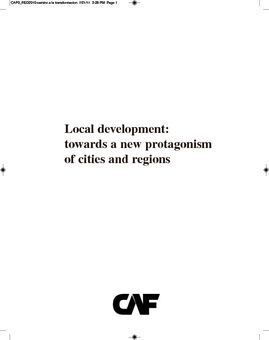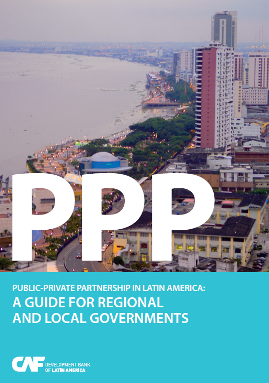| dc.contributor.author | Sanguinetti, Pablo | |
| dc.contributor.author | Pineda, José | |
| dc.contributor.author | Scandizzo, Stefania | |
| dc.contributor.author | Ortega, Daniel | |
| dc.contributor.author | Penfold, Michael | |
| dc.coverage.spatial | América Latina y el Caribe | en_US |
| dc.date.accessioned | 2016-09-22T20:52:35Z | |
| dc.date.available | 2016-09-22T20:52:35Z | |
| dc.date.issued | 2010-07 | |
| dc.identifier.citation | Sanguinetti, P., Pineda, J., Scandizzo, S., Ortega, D., & Penfold, M. (2010, July). RED 2010: Local development: towards a new protagonism of cities and regions (chapter one). Caracas: CAF. Retrieved from https://scioteca.caf.com/handle/123456789/941 | en |
| dc.identifier.issn | 980-6810-01-5 | |
| dc.identifier.uri | https://scioteca.caf.com/handle/123456789/941 | |
| dc.description.tableofcontents | The analysis presented throughout this publication suggest that a successful local development strategy should be comprehensive, that is, it should act upon all of the determinants of development and at the same time base itself on the territory. Thus, subnational governments play a key role in its design and implementation. This role goes beyond the formally mandated powers of spending, taxation and regulation emerging from the decentralization process. Ultimately, what makes a city or region more or less competitive is the prevalence of “soft” institutions, consisting of popular assemblies, neighborhood associations, business chambers, learning and cultural centers, among others, through which different stakeholders may interact, express demands and share information within an atmosphere of cooperation and trust. At the local level, the possibility of creating this institutional fabric is favored by the physical proximity of the diverse interests. These institutions enable a more efficient public decision-making process that can successfully respond to both the risks and the opportunities that are generated by technological change and national and international economic trends.With the sixth edition of this Report on Economics and Development, CAF hopes to contribute to the debate on the role of subnational governments (alongside other local actors) in the economic development of Latin America. Reducing income gaps and other variables that affect quality of life require the sourcing of goods and services, both public and private, whose production technology involves the use of local resources, such as human capital and institutions, which cannot easily be provided by the central government. This proves the fundamental role that territorial stakeholders play. | en_US |
| dc.language.iso | en | en_US |
| dc.publisher | CAF | en_US |
| dc.rights | CC-BY-NC | es_ES |
| dc.rights.uri | http://creativecommons.org/licenses/by-nc/4.0/ | es_ES |
| dc.subject | Ciudades | en_US |
| dc.subject | Desarrollo local | en_US |
| dc.subject | Economía | en_US |
| dc.subject | Investigación socioeconómica | en_US |
| dc.title | RED 2010: Local development: towards a new protagonism of cities and regions (chapter one) | en_US |
| dc.type | bookPart | en_US |
| dc.publisher.city | Caracas | en_US |






